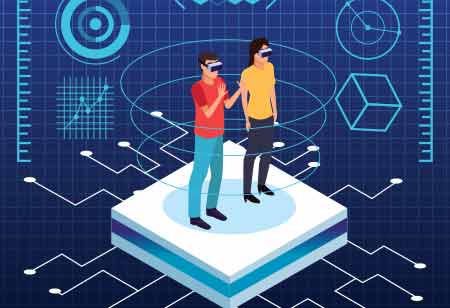THANK YOU FOR SUBSCRIBING

The Future of Human Interaction with Consumer Electronics: Meeting the Sensor Needs
Neomar Giacomini, Industry Partnerships - Advanced Development and Innovation, Whirlpool [NYSE: WHR]

 Neomar Giacomini, Industry Partnerships - Advanced Development and Innovation, Whirlpool [NYSE: WHR]
Neomar Giacomini, Industry Partnerships - Advanced Development and Innovation, Whirlpool [NYSE: WHR]Introduction:
In the digital era, human interaction with consumer electronic equipment has evolved rapidly, that is mostly driven by advancements in sensor technology. Younger generations have grown up in contact with a multitude of smart devices, became accustomed to seamless interactions through the integration on sensors such as gyroscopes, accelerometers, pressure sensors, touch input sensors, cameras, and many others along with the respective algorithms to embed them into application. As engineers continue to deliver innovation, exciting possibilities for sensorial enhancements in human-device interactions are waiting ahead. This article explores the emerging trends and potential sensorial needs that will shape the future tech-savvy generations with consumer electronics.
The Sensory Revolution:
Sensor technologies have played a crucial role in revolutionizing the way in which we interact with consumer electronic devices. The proliferation of such in consumer electronics has raised the bar for user experience expectations. Accelerometers and gyroscopes enable control through natural movement, providing an intuitive way to navigate through menus, games, and virtual reality systems. Pressure sensors embedded in touchscreens detect different levels of force, allowing for precise touch input and enhancing user experience. Additionally, cameras and depth sensors enable facial recognition, augmented reality overlays, and immersive experiences.
“The next frontier for consumer electronics lies in creating immersive user experiences that engage all our senses.”
In response to these expectations, manufacturers are investing heavily in sensor technologies. R&D efforts are focused on developing sensors with higher accuracy, lower power consumption, and improved reliability. Advancements in artificial intelligence and machine learning are being leveraged to enhance sensor capabilities, enabling devices to learn and adapt to individual users' behaviors and preferences.
Immersive User Experiences:
The next frontier for consumer electronics lies in creating immersive user experiences that engage all our senses. While visual and auditory experiences have been prioritized in the past, future advancements will focus on integrating additional sensory inputs. For example, haptic feedback technology can simulate textures, vibrations, and even temperature variations, enabling users to "feel" virtual objects. This will revolutionize gaming, virtual reality, and remote-control applications, providing a more immersive and realistic experience. Some of these are not exactly new to this day, our kids are already growing holding video game controllers that include multiple technologies capable of input and feedback much more advanced than their parents are using in the day-to-day office life.
Biometric Sensors:
As wearable technology becomes increasingly prevalent, the integration of biometric sensors will redefine the way we interact with consumer electronics. Biometric sensors such as heart rate monitors, skin conductance sensors, and brain-computer interfaces will provide valuable data about the user's emotional state, health, and cognitive abilities. External capture devices such as 3D cameras and time-of-flight (ToF) mapping can also provide other personalized details about the user such as positioning, height, weight and posture for gaming and/or virtual reality purposes for instance. By utilizing this information, consumer electronics can adapt their functionality to optimize user experience and even provide personalized content recommendations.
"As we look to the future, sensor technology will continue to evolve, catering to the increasingly sensorial needs of the younger generations"
Environmental Sensors:
The importance of environmental sustainability is gaining momentum, and future consumer electronics are not exempt from this trend, especially due to the amount of news that younger generations are in contact with, related to the topic, this is on the news everyday now. Future devices are likely to integrate environmental sensors that monitor air quality, temperature, humidity, and other relevant factors. This data can be used to create smart homes that automatically adjust climate control, lighting, and other parameters for optimized comfort and energy efficiency. Furthermore, sensors can enable devices to detect and respond to their surroundings, providing a more intuitive and context-aware user experience. Such functionalities, although already used for full residencies, may in the future be used for individual rooms to create the necessary ambiance for entertainment reasons, such as a colder humid day that relates to a movie.
Conclusion:
The integration of sensors in consumer electronic devices has significantly transformed human-device interactions, providing enhanced user experiences. The younger generations' exposure to sensor-rich consumer electronics has raised the bar on what to expect while interacting with electronics. As we look to the future, sensor technology will continue to evolve, catering to the increasingly sensorial needs of the younger generations. Immersive experiences, biometric sensors, environmental monitoring, and seamless interaction will shape the future landscape of consumer electronics. By pushing the boundaries of innovation, engineers will pave the way for exciting advancements that redefine the way we interact with technology, ultimately enhancing our daily lives even further.
Read Also








-450x308_tK8s.jpg)














ON THE DECK